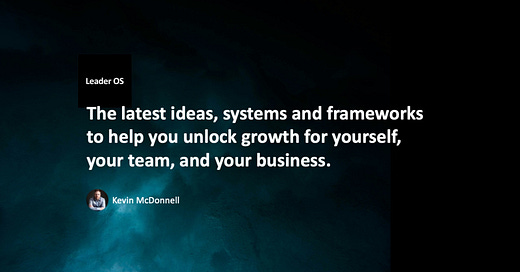Leadership Evolution in 2025: Strategies, Trends, Predictions, and Insights for Forward-Thinking CEOs
This week, I found myself immersed in a range of perspectives on leadership and its evolving role in shaping organisations and communities. Each article I read provided distinct angles on what it means to lead effectively in 2025, and the collective insights were both a mirror and a challenge to how we think about leadership today.
I started with an intriguing piece on how Build-A-Bear CEO Sharon Price John spends her Fridays writing handwritten thank-you notes. At first glance, this might seem like a quaint throwback, but it underscores the enduring value of personal connection in a business world increasingly dominated by technology. Her approach reminded me that even small gestures of gratitude can ripple into big outcomes—building trust, loyalty, and goodwill in ways that algorithms and automation can’t match.
This idea of meaningful, personal leadership tied seamlessly into the broader predictions about what leadership will look like in 2025, as highlighted by London Business School. Leaders are expected to pivot between clarity and empathy, decisiveness and adaptability, as they navigate growing complexity and rapid change. It’s a high-wire act that demands more than just technical acumen—it requires emotional intelligence and a knack for creating cultures where diverse voices can thrive.
In parallel, another article from IMD unpacked how leaders can thrive amidst turbulence, emphasising the importance of resilience and curiosity. I found myself nodding along to the assertion that surviving chaos isn’t just about having the right answers—it’s about asking the right questions and being open to rethinking old solutions. This perspective felt particularly timely, given the uncertainties many industries face today.
Speaking of adaptability, MIT Sloan Review shared 10 essential leadership tips for 2025, many of which resonated with the challenges we face daily. From embracing continuous learning to prioritizing mental well-being, these tips highlight how leaders need to evolve not only their skill sets but also their mindsets.
It was also refreshing to see Forbes focus on turning chaos into clarity—a reminder that while uncertainty can feel overwhelming, it’s often a catalyst for innovation and growth when approached with the right mindset. What stood out was the emphasis on leaders as clarity creators—people who can distill complexity into actionable steps and inspire confidence, even when the way forward isn’t entirely clear.
Fast Company offered some grounding reflections with key leadership takeaways from today’s CEOs, spotlighting how small, intentional actions can create big impacts over time. The emphasis on purpose-driven leadership struck a chord, especially in how it aligns with broader societal shifts toward meaningful work and values-driven decision-making.
A companion piece on 2025 leadership trends also piqued my interest. It highlighted the rise of empathetic leadership and data-informed decision-making as twin pillars of future success. What I appreciated most was the reminder that these aren’t just buzzwords—they’re imperatives for staying competitive and relevant.
Finally, Forbes offered a refreshing take on empowerment as leadership’s greatest advantage. The piece argued convincingly that when leaders trust their teams and step back, the results often exceed expectations. It’s a principle that feels simple in theory but requires deliberate effort to practice—especially in high-pressure environments where the instinct is to retain control.
What do you think? Are these trends and strategies already shaping how you lead - or aspire to lead?




